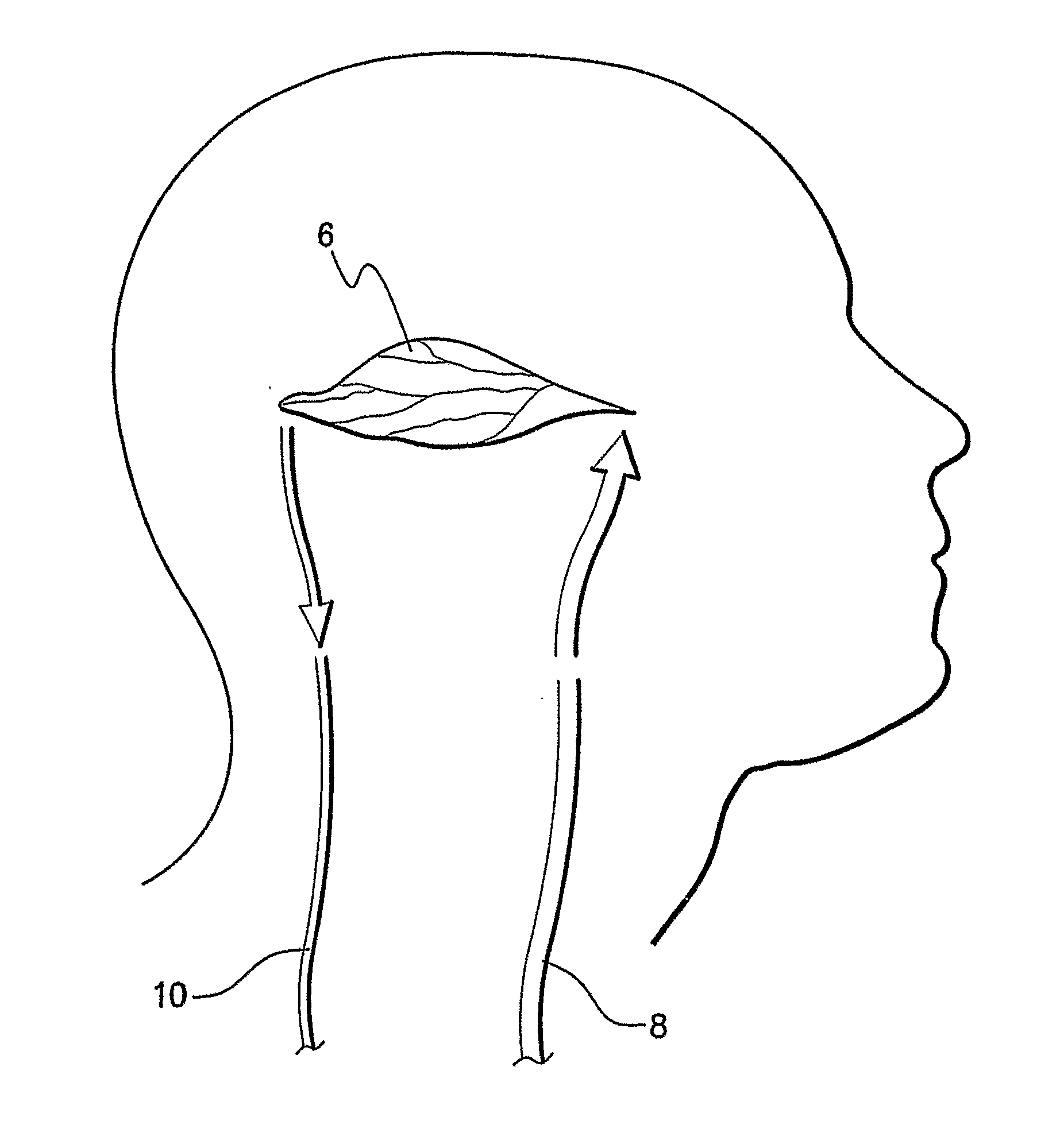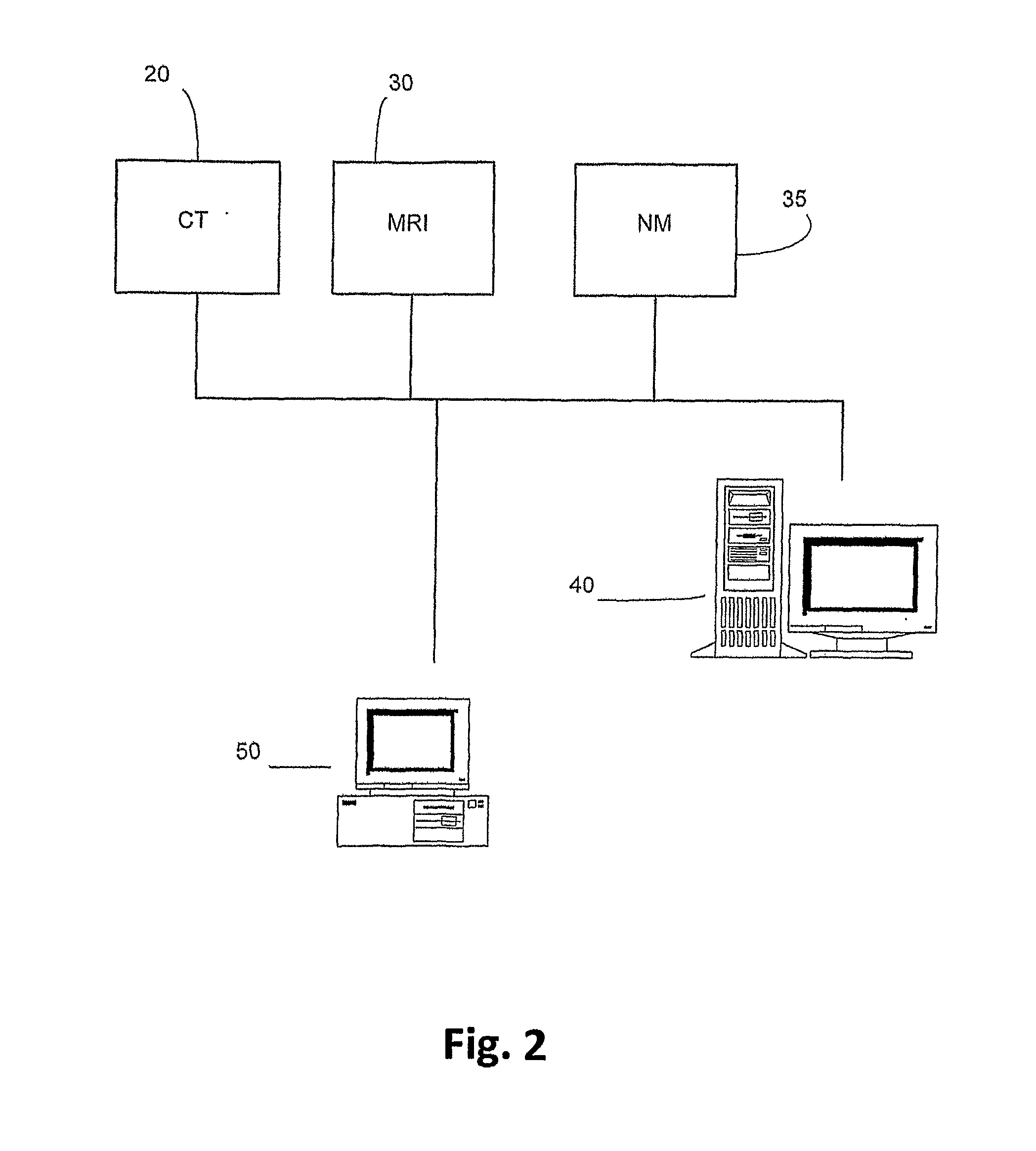Method and system for mapping tissue status of acute stroke
a tissue status and acute stroke technology, applied in the field of acute stroke tissue status mapping, can solve the problems of inability to accurately delineate the penumbra and infarct regions of inability to apply the same cbv or cbf threshold values to gray matter and white matter, and inability to accurately delineate the penumbra and infarct regions by applying the same cbv or cbf threshold values. the effect of normal decon
- Summary
- Abstract
- Description
- Claims
- Application Information
AI Technical Summary
Benefits of technology
Problems solved by technology
Method used
Image
Examples
Embodiment Construction
[0036]Although the following detailed description contains many specifics for the purposes of illustration, anyone of ordinary skill in the art will readily appreciate that many variations and alterations to the following exemplary details are within the scope of the invention. Accordingly, the following preferred embodiment of the invention is set forth without any loss of generality to, and without imposing limitations upon, the claimed invention.
[0037]The present invention is particularly applicable to CT, MRI and MN imaging systems. A bolus of contrasting agents is introduced via a needle into a patient at, for example, the arm of the patient. However the bolus can be input to any other part of the patient. A region of interest (ROI) may be a tissue 6 in a part of the patient's brain as shown in FIG. 1. Alternatively, the ROI may be a pixel or a plurality of pixels, where many pixels represent a calculated image to produce one or more perfusion maps. Blood circulating throughout...
PUM
 Login to View More
Login to View More Abstract
Description
Claims
Application Information
 Login to View More
Login to View More - R&D
- Intellectual Property
- Life Sciences
- Materials
- Tech Scout
- Unparalleled Data Quality
- Higher Quality Content
- 60% Fewer Hallucinations
Browse by: Latest US Patents, China's latest patents, Technical Efficacy Thesaurus, Application Domain, Technology Topic, Popular Technical Reports.
© 2025 PatSnap. All rights reserved.Legal|Privacy policy|Modern Slavery Act Transparency Statement|Sitemap|About US| Contact US: help@patsnap.com



